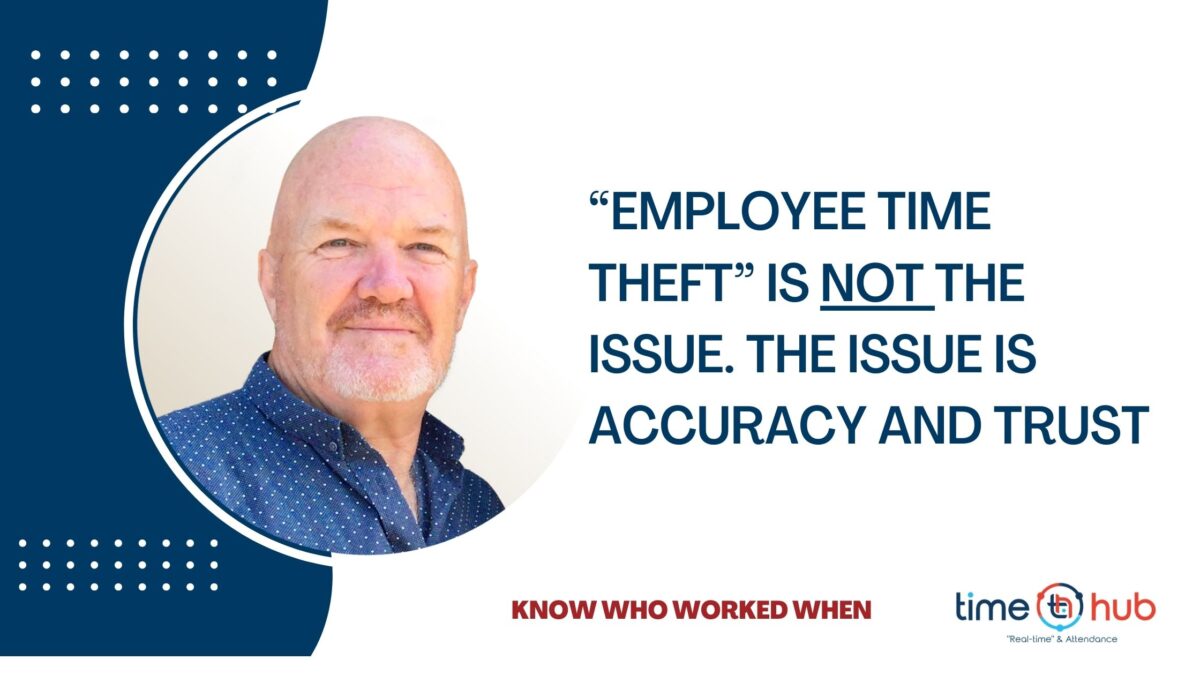We often hear the term “Employee Time Theft” when speaking with employers. It is an industry term bandied about by time and attendance vendors to scare employers into buying their systems.
Yet I wonder whether “Time Theft” really is the key issue you should be looking to solve. I don’t think it is.
The term “Time Theft” was first coined by the Robert Half Group in 1985 in an often quoted study they released that year (here). It is not a term I am keen on. I prefer the term "Time Creep".
The study asserted that on average an employee will "steal" up to 4 ½ hrs per week.
While this may be the reality in a small number of cases, I do not believe the issue is this extreme. The reality is that there will always be staff who steal, whether it be your pens, stationary, money or time.
So yes, stopping an employee who is intentionally recording their hours incorrectly is something which every employer would want to stop. Yet experience has shown me that most employees who are cribbing a minute or three here and there do not see it as theft.
They naively think “it's ok” to write down that they were on time when they were 2 minutes late because “no one will care” or worse, they are not sure the boss is working out the time sheets correctly or he isn’t keying the right data into the payroll, so why should they worry.
The irony of asking staff to use a manual system which is open to abuse i.e. a paper timesheet is inviting trouble, yet every day I hear – “we’ve always done it this way” and then in the next breath “I think some staff are recording their times wrong”
To me, there is another, bigger problem which comes into play. That problem is TRUST, and this, not “time theft”, is the key reason you should look at implementing an automated system to manage employee attendance.
When you use a manual system like paper time sheets, you are opening yourself up to thoughts that you don’t trust your employees to write down the correct times. You are also opening yourself up to staff being concerned that you are not working out their hours correctly and/or keying the data into the payroll system correctly.
Having a situation where neither side trusts the other (even if it is never stated) is not good for your business.
Add to this the fact that when you use a manual system like paper time sheets, an employee’s data will be "touched" over around 35 times every pay period, before they receive their pay into their bank account. The opportunity for error is massive.
One of the key benefits of automating your employee attendance is that computers know how to calculate time, total and collate data, apply rules, and transfer data and they do it all at speed.
This removes the factor of human error (intentional or accidental).
If your employees clock in and out as they should, they can trust that they will be paid accurately and on time for the hours they work, as the system will work out everything based on the company’s rules and it will also speed up the process.
You will be able to trust that you are paying your employees accurately for the hours they work, and, in the process, you will be saving money with more accurate data and reduced processing time from not having to manually calculate or key anything into your payroll.
With modern time and attendance systems, you can see your employees clocked times in “real-time” from any internet-connected device. Therefore, if you still don’t trust them you can check where and when they clocked in.
As a bonus, experience has shown us that automating employee time and attendance will pay for itself in less than three months with typical savings of between 2% and 5% of annual wages.
Another issue often overlooked by employers using manual systems is the record-keeping requirements of the Employment Relations Act and the Health and Safety in Employment Act. All employers must keep a record of the hours worked each day, including start time, finish time and any non-paid breaks taken. These systems will ensure you meet your record-keeping obligations under these under these acts.
So, the question to ask yourself is not – “Do I have a time theft problem” but rather “Do I have a trust problem” and then “what can I do about it to ensure we are accurately recording the hours' staff work in a way which is fair, accurate and equitable to both the employee and the business”
If you would like help answering this question you can book a free, no-obligation chat with me about your current method of tracking employees' attendance use the link below.
Click here to book a time to chat or you can call us on 06 6507297 or email [email protected]
